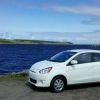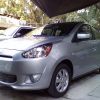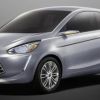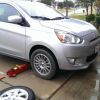
Originally Posted by
3dplane

It is a bit complicated. While it is true that during deceleration in gear above a certain rpm the fuel injectors are commanded off,so no fuel is injected. (Called DFCO or Deceleration Fuel Cut Off).
However it also slows down the vehicle (engine braking) thus killing momentum that could have been used to coast further.
Now if you were going to have to slow down anyway and would have to use the brakes to keep speed under control (like steep downhill),then sure it is a better option to leave the transmission in gear and let engine braking help staying off the brakes.
On the other hand if these are rolling hills and gaining too much speed on the downward leg is not a concern,I would neutral coast because the amount of fuel consumed at idle during the coast portion will be less than if I let engine braking hold me back from coasting further/faster and now I have to start accelerating sooner to make it up the next hill.
I don't know if that made sense,but it really boils down to the particular situation/terrain conditions.
100%  That's what I do now when we go to the city. Have to climb a good size mountain, and on the way home coasting would get me doing 160 or so in a 100
That's what I do now when we go to the city. Have to climb a good size mountain, and on the way home coasting would get me doing 160 or so in a 100  Leaving it in 5th usually lets it creep up to 120 with some minimal braking.
Leaving it in 5th usually lets it creep up to 120 with some minimal braking.
__________________________________________
 View my fuel log 2014 Mirage SE 1.2 manual: 52.3 mpg (US) ... 22.2 km/L ... 4.5 L/100 km ... 62.8 mpg (Imp)
View my fuel log 2014 Mirage SE 1.2 manual: 52.3 mpg (US) ... 22.2 km/L ... 4.5 L/100 km ... 62.8 mpg (Imp)
I had read this elsewhere and people seem to have different ideas. If I was to be costing downhill in neutral for a good 5km, would I use more or less gas than keeping it in 5th the whole way down. Some people are saying that in 5th gear, the transmission keeps the engine moving so it stops fuel to the engine, while in neutral the engine has to use fuel to keep it idling. Kind of curious since I live in hilly area and spend probably 5km a day worth of driving just coasting



 Great Northern Whiteout
Great Northern Whiteout
 Reply With Quote
Reply With Quote
 Thrumpy
Thrumpy

 "Global Small" Concept
"Global Small" Concept Even Fancier Metro (Mirage #2)
Even Fancier Metro (Mirage #2) Fancy Metro (Mirage #1)
Fancy Metro (Mirage #1) Loaner #1 from Mitsubishi
Loaner #1 from Mitsubishi Loaner #2 from Mitsubishi
Loaner #2 from Mitsubishi Mirage #3: Appliance Car
Mirage #3: Appliance Car
 Bae
Bae